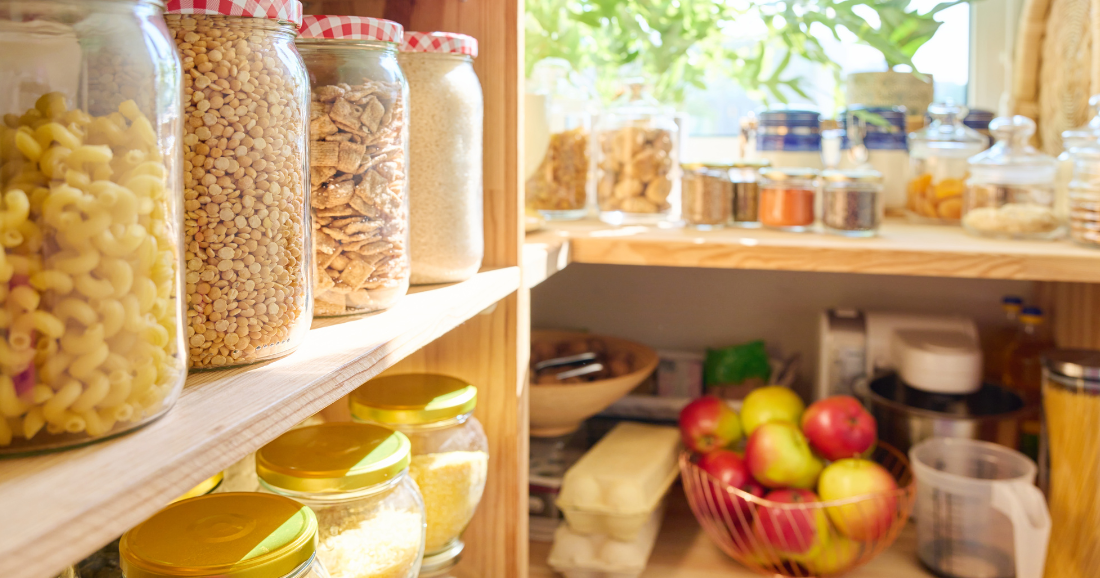
During hurricane season, most residents think of flashlights, batteries and bottled water, but knowing how to stock your kitchen smartly can keep your family safe, well-fed and even a little comforted when the lights go out.
José Llanes, who has been the store manager at the Island’s Winn-Dixie for 11 years, vividly remembers overcoming the challenges of reopening the store after Hurricane Irma the morning of Sept. 10, 2017. The center of Irma made landfall near Cudjoe Key, about 20 miles east-northeast of Key West, the first Category 4 hurricane to make Florida landfall since Hurricane Charley in 2004.
“At first, we were not allowed back on the Island but thanks to the Chief of Police (at that was Charles Press), we were able to reopen the store about six hours after we were allowed back on the Island,” Llanes recalls. “We opened with nine employees.”
Reopening after a storm depends on a lot of factors, especially the degree of damage to the island. In the event the Island is evacuated, residents are usually allowed in after first responders and the Village emergency manager gives the all clear.
Llanes says Winn-Dixie has two generators, one that operates the entire store, including the food freezers and an additional one for the front part of the store.
“We do not lose food to spoilage in case of a power outage thus enabling us to open quickly to serve the needs of the residents,” said Llanes.
At The Golden Hog, owner and operator Jorge Gonzalez Capeillo said that while the store does not have generators, his team will be ready to open the store as soon as it is safe and power is restored.
“We have a number of employees who reside on the island, and provided there is no mandatory evacuation, we will work to be ready to serve the community as soon as we can.”
In addition to knowing where to find food, below are some tips on how to plan, portion, and prep your pantry like a pro — no gourmet kitchen (or electricity) required.
1. How Many Days Should You Prep For?
The general rule is at least three days of food and water per person. If you’re in a high-risk zone, such as Key Biscayne, have small children, elderly relatives, or anyone with medical needs, it’s wise to plan for seven to 10 days. Hurricane aftermaths can mean power outages, blocked roads and empty grocery store shelves for much longer than expected.
2. Calculating the right portions
Keeping track of nutrition and food portions is key — you don’t want to run out, but you also don’t want to waste precious supplies.
• Adults need about 2,000 calories per day.
• Kids need between 1,200–1,800, depending on age.
• Water: Aim for 1 gallon (4 liters) per person per day — this includes drinking, cooking, and hygiene.
Quick math tip:
• 1 can of beans or tuna = 1 protein-rich meal per person.
• 1 cup of dry rice = 2 full portions when cooked.
• Oats, couscous and instant potatoes also expand when hydrated, giving you great volume for minimal storage.
3. Stock Up Smart: The Best No-Power Foods
You don’t need a freezer full of frozen pizza to feel secure. In fact, you don’t need a freezer at all. These pantry stars will hold up beautifully with no refrigeration — and they actually taste good.
Shelf-Stable MVPs:
• Canned goods: tuna, salmon, sardines, beans, corn, carrots, pineapple, peaches.
• Nut butters (peanut, almond), shelf-stable milk, powdered milk.
• Granola bars, crackers, dried fruit, trail mix.
• Instant foods: mashed potatoes, couscous, instant oatmeal, precooked rice.
Minimal-Fridge Champions:
• Hard cheeses (like parmesan or manchego).
• Farm eggs (unwashed, stored in a cool spot, can last days unrefrigerated).
• Tortillas, pita bread, wraps — longer shelf life than standard sliced bread.
Flavor Boosters:
• Small packets of mustard, mayo, soy sauce, hot sauce, olive oil.
• Instant coffee, tea, sugar, honey.
4. Helpful tools & appliances
Even if the power’s out, your meals don’t have to suffer.
• Portable gas stove (and extra propane cans) — outdoor use only.
• Manual can opener — trust us, it’s vital.
• Coolers with dry ice or reusable ice packs.
• Headlamps (way more helpful than flashlights for cooking).
• Ziplock bags & airtight containers to store leftovers and open cans.
• Power banks or solar chargers for phones and mini appliances.
5. How to best organize your emergency pantry
A well-organized supply makes prep faster and safer:
• Use waterproof plastic bins to separate foods by category (protein, carbs, snacks).
• Label everything with a “use by” date — especially once opened.
• Apply the FIFO rule: First In, First Out. Rotate older items to the front to use them first.
6. No-Cook, No-Stress Recipes
Who says no power means no flavor? These easy recipes can be made with basic tools and pantry ingredients:
• Tuna Chickpea Salad – Canned tuna, chickpeas, diced olives, lemon juice, salt, olive oil.
• Black Bean Wraps – Canned beans, corn, diced tomato, shredded cheese, tortillas.
• Sweet Overnight Oats – Instant oats, powdered milk + water, raisins or banana chips, a drizzle of honey.
• Mediterranean Couscous – Instant couscous, canned roasted red peppers, green beans, olive oil, salt.
7. Bonus Tips for Real Value
Emergency Shopping Checklist:
✔️ Canned proteins
✔️ Carbs (rice, oats, instant mash)
✔️ Dried fruits & snacks
✔️ Nut butters
✔️ Water (1 gal/day/person)
✔️ Gas stove + fuel
✔️ Manual tools
✔️ Baby food & pet food if needed
❌ What Not to Buy
• Foods that need long cooking (e.g., raw beans or lentils).
• Frozen goods (unless you have backup power).
• Salty snacks — increase thirst.
• Glass jars — they break easily and don’t stack well.
